Welcome to our Ultimate Guide to Great White Sharks.
There are a variety of sharks, 503 different species of shark to be precise; but in this ultimate guide to Great White Sharks, we will be dealing with information and titbits about Great White Sharks. This ultimate guide to Great White Sharks, will offer information about Great White Sharks, including their digestive system, eyes and sense of smell, as well as other aspects of the Great White Shark industry, like cage diving and what it could possibly be like for the Great White Shark. Hopefully our ultimate guide to Great White Sharks will offer up information you will find of interest and perhaps even, a little something you never knew before! It is our hope that this ultimate guide to Great White Sharks piques your interest and encourages you to do even more research into the wonderful world of Great White.
Great Whites in Captivity
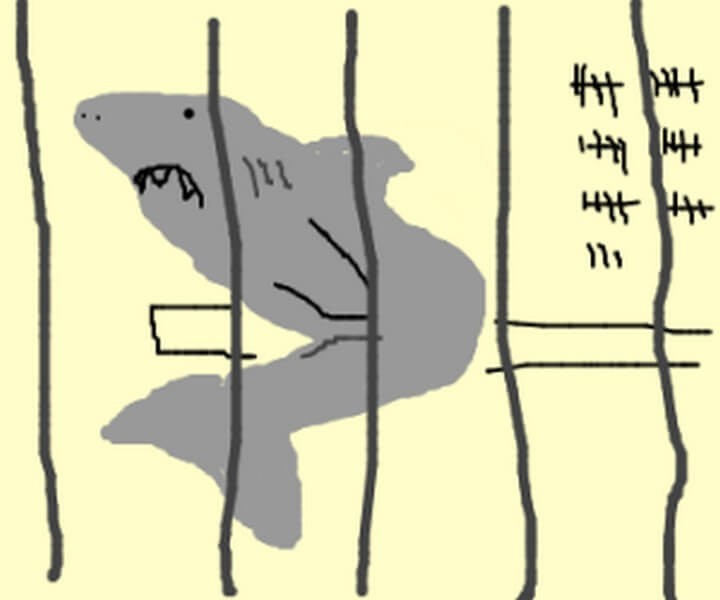
“Shark”! Thought that would get your attention. Unlike, certain other of the species; The only place to see Great White Sharks, is in the wild, their natural habitat, as Great Whites have never been able to survive in captivity.
The reasons for this are unclear, but what we do know, is that a Great White does not eat when in a confined space. No matter the size of the biggest man-made tank, this does not constitute enough space, for these magnificent creatures, whom we have seen, swim massive distances, within its life time.
We always suggest coming to visit the Great White Sharks of False Bay, where you can gasp at them in awe as they fly during the breaching season.
Great White Shark and their Teeth
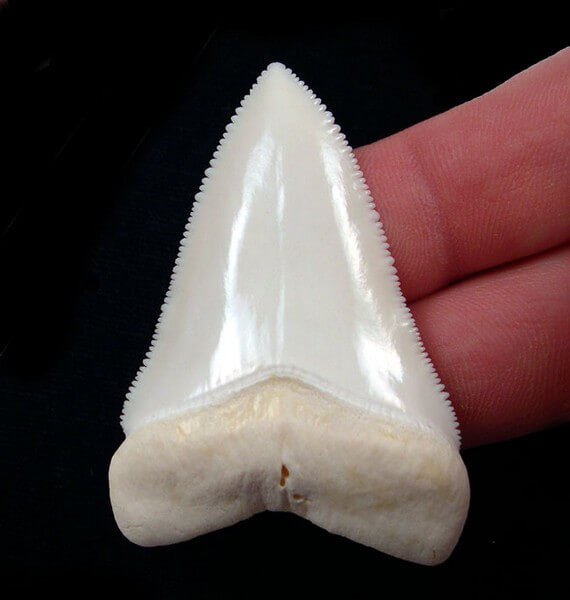
When you hear the word “Shark”, the unconscious reaction could depend on your position and location at the time of hearing it. Your blood could run cold, if you are beyond the breakers and the picture that is sure to fill your mind, is teeth! I think even the most intrepid adventurer, would spring a little cold sweat there. Sharks teeth vary from species to species, in shape and size.
The Great White’s teeth are a perfect design for cutting through flesh, usually that of a seal, sea lion or whale carcass. With up to five layers of these triangular, serrated teeth, on both the upper and lower jaw, boasting more than 300 on average, it is understandable that the mere human’s blood would run cold and sweat bullets. More than just this, is the fact that with the ideal design of their teeth, their jaws operate separately and can move independently of each other!
Great Whites lose thousands of teeth in their lifetimes, always being regenerated as another spins forward from a coil-like tooth reservoir of backup teeth in the jaw and spins forward to replace the lost one. Pretty cool really! Great Whites can go through up to 20 000 teeth in their lifetime!
Want to know something weird about Great Whites and their digestive system?
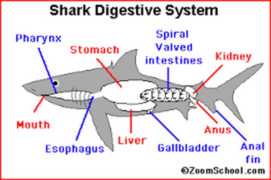
Not only do Great Whites turn their stomachs inside-out, but they have four distinct digestive processes; the oral cavity, the foregut, midgut and hindgut. Each with its own necessary functions.
The oral cavity, as the words suggest, deal with the mouth, so the teeth, tongue and of course pharynx.
The foregut, is made up of the oesophagus and stomach, the midgut, is known to us as the intestines. Great White Sharks, also have a small and large intestine. And finally the hindgut, which includes the colon and the back end.
Read more about the Great White’s digestive system here –
The Great White’s ability to “feel”, is certainly something to talk about
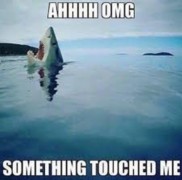
And when I say “feel” I am speaking in the physical sense; it’s quite extraordinary.
There are two aspects to the Great Whites ability to touch and feel. One being the close by, right here touch or feel, while the other is the “distant” ability to touch. Possibly the most interesting aspect of this “touch” ability, would have to be the nose, and lateral line that runs from the business end of the shark, to the tail.
It’s this ability that allows the shark to “feel” an electro-magnetic beat from miles, and miles away. They use this incredible ability to find prey and hunt.
Read more about the Great White’s ability to feel here –
The Great White Shark and its skin
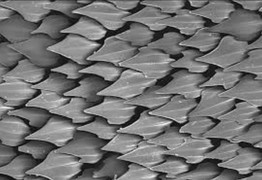
On the dorsal side (top end) of the Great White Shark, the skin is a beautiful dark grey, while on the underside (the belly) it is lighter grey to white. The skin is rough to the touch, as a matter of fact, it is so rough, that it is used as a type of sandpaper, called Shagreen! Shagreen is not only used as a sandpaper, but can also be used as a decretive material, and does not only come from the skin of sharks or rays, but other land based animals as well.
The Great Whites skin is made up of what looks and feels like little curved teeth, making it rough to the touch, so as to protect it again any possible enemies and prey, as this fights back.
Read more on the Great White’s skin here –
The Great White and their sense of smell

It is known, world over, that a Great White’s sense of smell, is second to none!
Ever wondered how a Great White is able to detect the metallic scent of blood in such a vast ocean? It’s “nose” has what is referred to as “nares” which are nostril like ducts that are situated on the underside of the shark’s snout. These holes are not used for breathing, but rather for smelling.
The nares are separated by a flap of skin, and this is also responsible for the sharks’ sense of smell. These folds have a larger surface area, so this allows for an even more accurate smell representation.
The Great White Shark’s eye
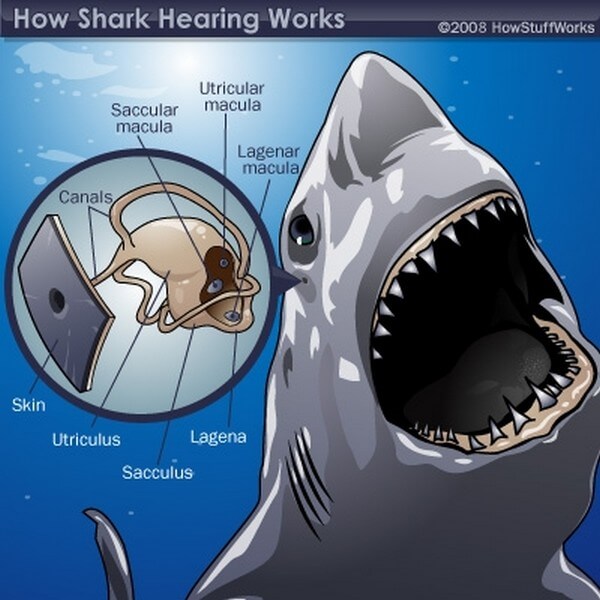
The eye of the Great White, is fascinating, and not nearly as dark and ominous as what we have seen on the big or small screen.
Great Whites are able to see up to, what is believed to be 15 meters, it is also believed to be able to see in colour and of course, in shadow as well as bright light.
Great Whites actually sport beautiful blue eyes and not black holes in their heads as one sees when looking at the majority of Great White footage or photos. The reason for this belief is simple; the Great White will roll its eyes back, as a form of protection from any other sharks, or overzealous prey.
Read more about the Great White’s eye here –
A Great White Shark’s life span
This has often been in question, and as very little is actually known about the Great White, this was always believed to be around 25 to 30 years. Though, when looking at other shark species, and most recently the Greenland Shark that is believed to be around 500 years old, is a lifespan of 25 to 30 years a good “guess-timation”? So then, what is a Great White Sharks natural lifespan?
Deep Blue; the largest Great White Shark ever caught on camera, is believed to be around 55 years of age now. Scientists, marine biologists and researchers are now, re-evaluating their previous numbers, pegging the Great Whites natural life expectancy to be around 70 years.
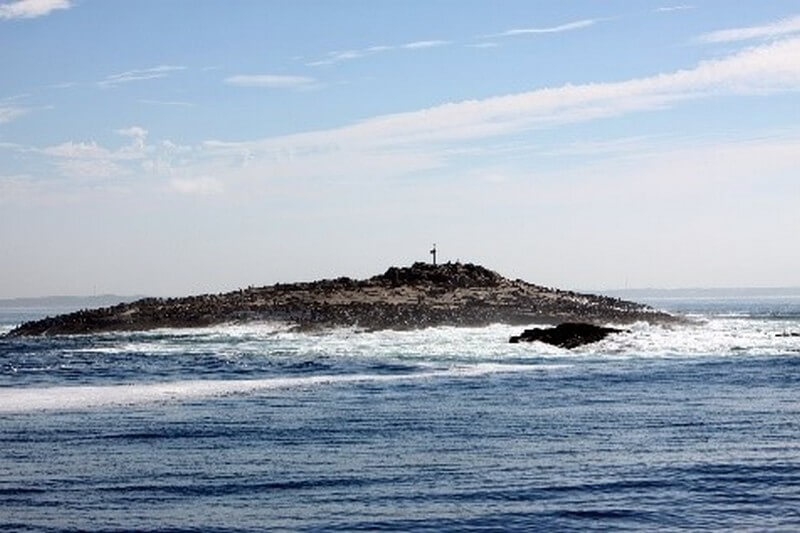
So where do we find Great White Sharks, if they cannot be seen in captivity? Obviously False Bay is a sure fire spot to find them, especially during their breaching season, this being between May and August of each year. At this time of the year they can most certainly be found at Seal Island. Then there is Gansbaai, which over the years has been referred to at the Great White Shark mecca of South Africa, and finally Mossel Bay, which has proved to be a new area that is quite active with juvenile Great Whites.
Great White Sharks, are generally found close to seal colonies, this being their preferred diet, and high concentrations of large game fish, like tuna and yellowtail.
They travel huge distances, and prefer slightly warmer waters; between 14 and 24’ Celsius; so generally, Australia, California, Guadalupe, Mossel Bay, Gansbaai and of course the world famous Seal Island. Seal Island False Bay, boasting the largest Cape Fur Seal Colony in South Africa, is a natural location and home to Great Whites.
Read more on where to find Great White Sharks here –
The Great White Shark’s status

The Great White Shark, despite being the largest known predatory fish, is considered “vulnerable” on the IUCN (International Union for Conservation of Nature), which means “Facing a high risk of extinction in the Wild”; and as we know, Great Whites do not survive in captivity. So, I guess that means they are vulnerable and face extinction, full stop! With no chance of re-institution. This in itself is a frightening thought, not only because we will no longer have White Sharks, but for the knock on effect it will have on the worlds eco-system!
In a recent census, it is believed that South Africa’s Great White population has dwindled to between 300 and 500 in total. As we also know, they can and have been known to swim some serious distances. There was a Great White that had been tagged in South African waters and was tagged in Australia! So whether the census is true of only a certain period or in general over a longer period of time, would have to be examined.
Great White Sharks, on the hunt
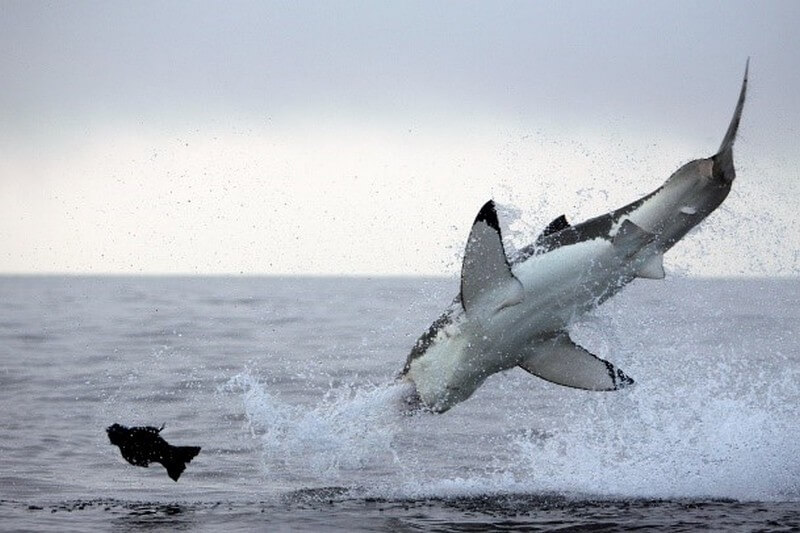
When speaking about Great White Sharks hunting, it’s vitally important to first and foremost establish what the preferred food source is, and though it has been well documented, I think it still a good idea to mention the moving meals they are partial to.
Number one on this list would have to be seals; Cape Fur Seals, Sea Lions monk seals, elephant seals, harbour seals, leopard seals, grey seals and the list continues. At this point, allow me to put out there; if you are surfing, swimming, kayaking or supping anywhere near these seal colonies, you are tagging yourself as free game, and the shark cannot be blamed should they test bite you!
Then there are also the smaller sharks, tuna and other larger game fish, which tend to be enjoyed during the summer months and away from the seal colonies. Great Whites, are considered opportunistic as well, and will gladly gorge on a whale carcass.
As it happens, the White Shark is perfectly camouflaged to swim un-noticed in the depth and only once they have spotted their prey; usually seals; swimming on the surface, the Great White will position itself, vertically and with the most incredible force, cut through the depths, into the shallows, and break the surface; hopefully stunning the seal, which would have been caught unawares, and fly through the air, either with seal in jaws, or awaiting seals landing in its mouth. Often times, these Great White Sharks, will clear the water totally, which means that they can reach up to 4 and 5 meters clear of the water! This is called breaching and is referred to by the shark community as Airjaws.
Read more on Great White hunting techniques here –
Great White Sharks in general
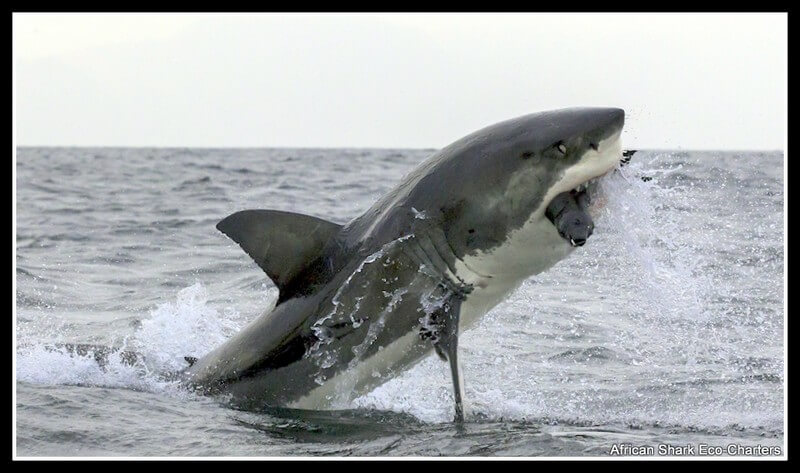
There is no very much data available on Great White Sharks, as they prove to be rather elusive at times. And certainly when threatened or if they preserve a threat, they will evacuate an area, as far as up to 100 to 200 kilometres and for a period of anywhere between 2 and 12 weeks! So this makes tagging a challenge, not that we mind. You see, sharks may be fish, and cold blooded creatures, which is believed to render them “feeling-less” but that does not take away from the fact that they experience fear and trepidation; so being wrenched from the ocean, having a hose shoved in your mouth and a hole being drilled into your dorsal fin, then a foreign object being bolted onto it, is going to be traumatic and will result in the sharks vacating the area, which of course means that there are not further sharks to tag or study.
There are a few things we do know for sure, these include: Great White Sharks can grow to more than 7 meters in size. Great White Sharks eat seals. Great White Sharks are hunted, not only by man, but by a specific pod of Killer Whales, who eat only their protein filled livers. We know that Great White Sharks swim massive distances. We know they breach as a formidable hunting technique. We know that the male Great White Shark does not grow as big as the female of the species; whether this is because they do not get the opportunity to make it there due to death by unnatural causes, is not known. We know that the male of the species has callipers, and we know that mating can be quite a vicious affair, often leaving the male and female, scarred. We know Great Whites have teeth that rejuvenate, so they never really go very long with missing teeth.
Read some more on Great Whites here –
Cage Diving with Great Whites, and other sharks
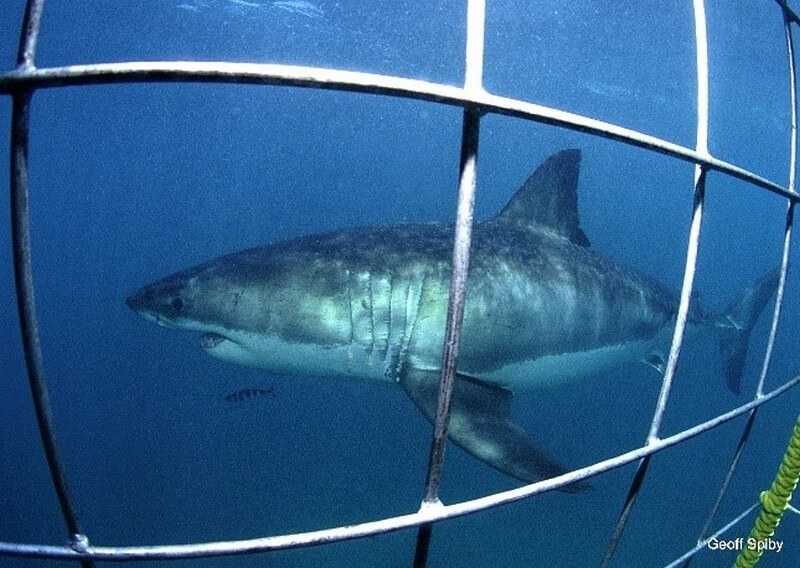
Cape Town is considered one of the destinations to come to go Great White Shark cage diving, and it has become a multi-million-rand enterprise. There are other areas worldwide that offer shark cage diving as well, though done differently. In South Africa, the cage is not allowed to be completely submerged or to float aimlessly in the ocean, but is attached to the side of the shark boat with approximately one meter above the water’s surface.
Most operators in South Africa do not offer scuba when shark cage diving, sitting that “the bubbles scare the sharks”, well the rest of the shark cage diving world has proved this incorrect, as every other shark cage dive area; IE: Australia and Guadeloupe, they use scuba, as does African Shark Eco-Charters.
If you are going to go Shark Cage diving, you may as well do it with the best and join African Shark Eco-Charters from word go.
Read more on Cage Diving here –
Till we meet again, Keep that toothy grin.
Written By: Nadine Bentley




